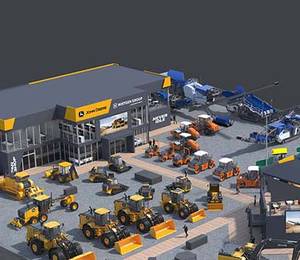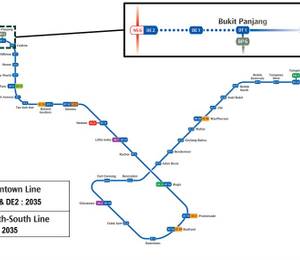Singapore’s Housing & Development Board (HDB) has signed two new research and development (R&D) agreements with the Nanyang Technological University, Singapore (NTU Singapore) and the Singapore University of Technology and Design (SUTD) to leverage the power of Big Data, data analytics and smart technology, in order to boost construction productivity and safety as well as to develop a new social framework to build stronger communities. The two agreements are totalling S$10.7 million and each will span three years.
The S$4.7 million collaboration with the NTU aims to develop a smart integrated construction system (SICS). This system will harness smart technology, through the use of smart sensors and automation, to transform traditional construction work processes and boost productivity.
The S$6 million Memorandum of Understanding (MOU) with the SUTD is intended to embark on a study called the New Urban Kampung research programme. This study will adopt cutting-edge modelling tools to analyse shifts in socio-demographic factors, and create new housing solutions in tandem with residents’ evolving needs and aspirations.
“The fast-changing urban landscape brings along with it increasingly complex housing issues and needs. To meet these challenges, HDB wants to advance the ‘science’ behind how we plan, design and build our HDB towns and estates,” said Cheong Koon Hean, CEO of HDB. “With behavioural science studies and data analysis, we can better understand our residents’ needs and changing lifestyles and their likely responses to our plans and initiatives. Smart construction solutions will also enable us to build more productively and achieve better quality.”
Smart construction process
HDB and NTU will develop SICS aimed at facilitating data-sharing and synergising construction processes across industry partners through a central digital platform. The platform will be powered by a smart tracking system to better manage the logistics of construction inventory, such as precast components for HDB buildings. The key features of the SICS system are:
1). HDB integrated building information system (IBIS) - The core of the SICS, this central digital database serves as a collaborative workspace. Using three-dimensional modelling of HDB projects as a common platform, industry partners in the entire construction supply chain can log in real-time information and progress updates on the project from their dispersed locations. This streamlines information and speeds up data-sharing amongst the different partners, including architects, contractors, precasters and construction material suppliers, enabling them to better keep track of budgets and timelines.
2). Smart tracking system – Supporting the IBIS, the smart tracking system will virtually manage the logistics of construction inventory as they move from various suppliers to the construction site. Smart sensors with geo-tagging capabilities will be attached to building components to help contractors manage the flow of construction materials into the work site, and swiftly identify and correct lapses such as wrong deliveries. This will minimise disruptions to the construction process and enable it to progress smoothly.
3). Smart crane system – This will automate the manual hoisting process of building components on site. Through smart sensors embedded in the precast components and a network of sensors placed around the construction site, the smart crane system will be able to calculate and determine the quickest and safest hoisting path to mitigate potential collisions and swaying, thereby reducing construction time and improving safety.

Data-driven approach for stronger communities
To ensure that HDB continues to provide a quality living environment that is in keeping with the changing needs of society, HDB will collaborate with SUTD on a social behavioural study – the New Urban Kampung research programme. This in-depth multi-disciplinary study will combine the fields of behavioural studies, computational social science and urban informatics, to predict how the demographics in HDB towns are likely to evolve, and attempt to forecast residents’ behaviour and responses to initiatives introduced in their living environment, through a combination of big data and advanced modelling tools.
Divided into four parts, the collaboration will culminate in the development of a New Urban Kampung framework to steer future town planning and housing design that will improve the overall quality of life for residents. These four parts consist of studies that aim to: gain a deeper understanding of HDB residents and their preferences; identify new quality of life indicators that reflect residents’ needs; find new ways to strengthen community-centric designs; and forecast the effects of new HDB living initiatives.











